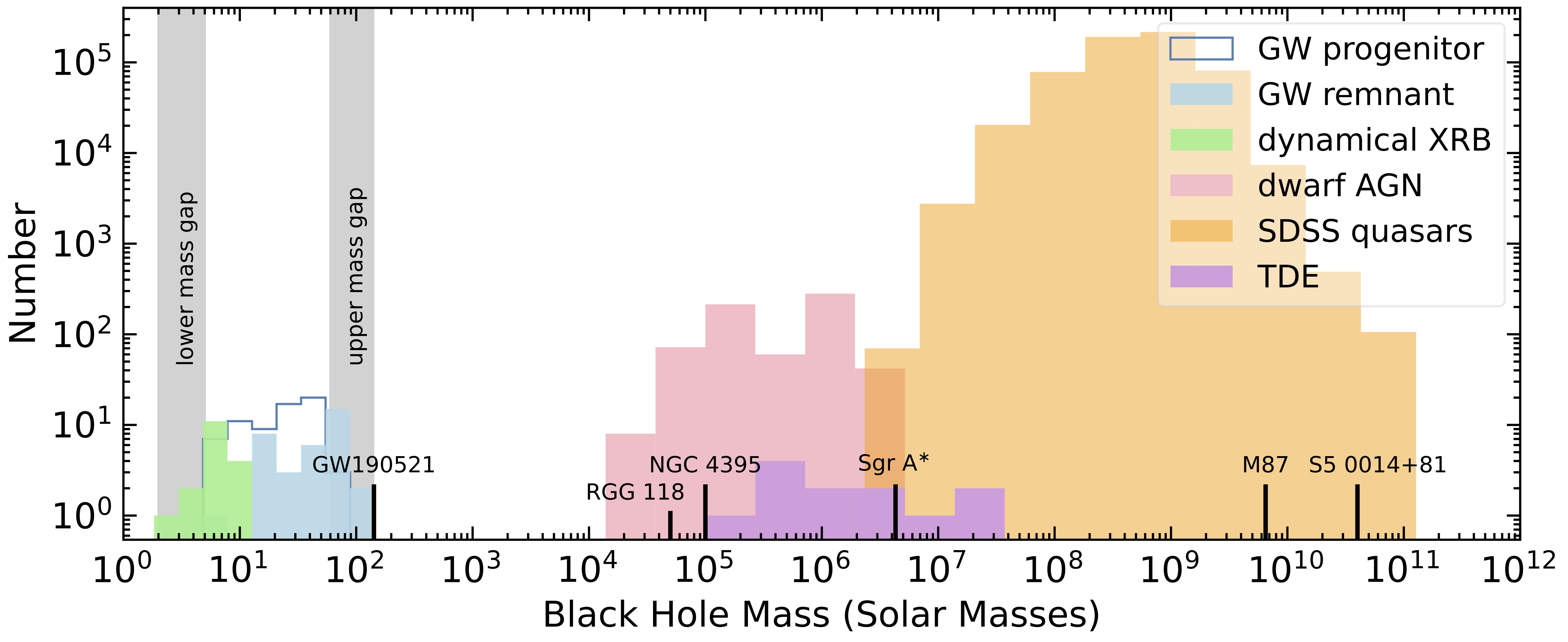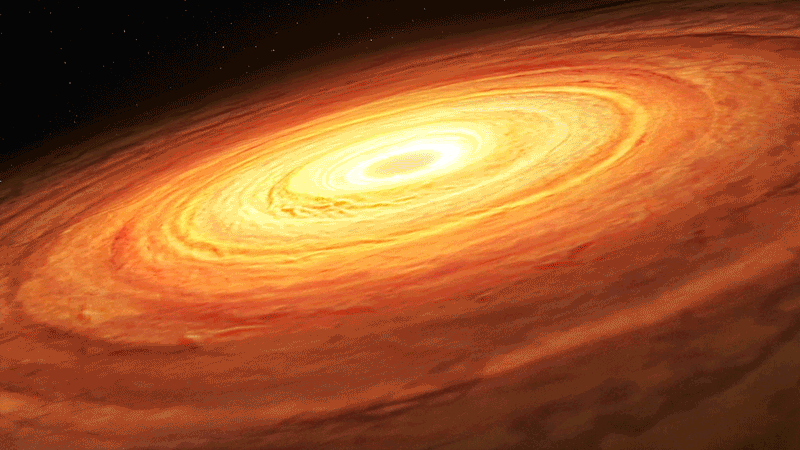Colin J. Burke, PhD

NSF AAPF Postdoctoral Fellow, Department of Astronomy, Yale University
Curriculum Vitae (updated 11/2024)
Yale Webpage
GitHub
Publications (ORCiD)
Publications (ADS)
Publications (Google Scholar)
| About Me | Research | Outreach | Talks | Resources |
Overview
How did supermassive black holes form at high redshift, grow over cosmic time, and come to occupy virtually every massive galaxy in the nearby universe? In order to answer these questions, I study the black hole population using accretion signatures, like optical variability, in large survey data. This presents new opportunities to study active galaclic nuclei (AGN), the origin of AGN variability, and physics of black hole accretion.
Intermediate-mass black holes
Intermediate-mass black holes (IMBHs) had to exist at some point in cosmic time to form the observed population of supermassive black holes.

Figure Caption: The observed mass spectrum of black holes.
Included in the figure are stellar-mass black holes with BH mass measurements from dynamical measurements in X-ray binary (XRB) systems (Corral-Santana et al. 2016), confidently-detected gravitational wave (GW) events (LIGO-Virgo 2021), supermassive black holes from SDSS quasars with single-epoch BH mass estimates (Wu & Shen 2022), broad-line dwarf AGNs with single-epoch BH mass estimates (Greene et al. 2007, Reines et al. 2013, Liu et al. 2018, Chilingarian et al. 2018), and tidal disruption events (TDEs) with BH masses estimated from the stellar velocity dispersion of their host galaxy bulges (Wevers et al. 2017). The lower mass gap refers to the scarcity of BHs observed below ~ 5 Solar masses and above the maximum possible mass of a neutron star (see e.g., Kreidberg et al. 2012). The upper mass gap results from predictions from stellar evolution that pair instability supernova leave no BH remnant above ~ 140 Solar masses (e.g., Woosley et al. 2017). For reference, we include some well known sources with measured BH masses, GW190521 (LIGO-Virgo 2020) RGG 118 (Baldassare et al. 2015), NGC 4395 (Filippenko et al. 2003), Sgr A* (EHT 2022), M87 (EHT 2019), and the luminous blazar S5 0014+81 (Kuhr et al. 1983, Ghisellini et al. 2009). The IMBH ``mass desert'' is evident. This figure is adapted from an illustrative version in Colpi (2017).
AGN Variability
I use optical imaging surveys to study the variability (or “flickering”) of active galactic nuclei (AGNs) and gain new insights into their central engines. Our recent work establishes a mass-timescale relation, whereby AGN variability can be used to estimate the mass of the central black hole. It was published in the journal Science (also see articles in Popular Science, Science News, and space.com):
C. J. Burke et al. Science 373(6556), 789 (2021).

Image Credit: Mark A. Garlick/Simons Foundation
Also see our work on the variability of the “poster-child” dwarf AGN NGC 4395: C. J. Burke et al. ApJ 899, 136 (2020).

Other Time-Domain Astrophysics
During our search, we also found a peculiar long-lived stellar transient in the metal-poor galaxy PHL 293B. I collaborated with Prof. Vivienne Baldassare to study this perplexing dwarf galaxy. Using data we obtained from the Gemini Observatory, we found the unusually-luminous broad Balmer emission has begun to fade away in recent years. We concluded the variability, despite appearing similar to that of an AGN, is actually likely due to a massive outburst of a luminous blue variable star, resembling the transient event SDSS1133. Our observations ruled-out some interpretations put-forth in previous papers.


C. J. Burke, V. F. Baldassare, X. Liu, et al. “The curious case of PHL 293B: A long-lived transient in a metal-poor blue compact dwarf galaxy.” ApJ Letters 894, L5 (2020).
Machine Learning
I collaborated with Patrick Aleo to adapt a new machine learning code to classify and deblend sources using the “Mask R-CNN” architecture for image segmentation. I have also had the privilege of mentoring and advising two undergraduate students, Anshul Shah (view SPIN poster) and Yufeng Liu, through the NCSA SPIN research program.

C. J. Burke, P. D. Aleo, X. Liu, et al. “Deblending and Classifying Astronomical Sources with Mask R-CNN Deep Learning.” MNRAS 490, 3953 (2019).
G. M. Merz, Y. Liu, C. J. Burke, et al. “Detection, Instance Segmentation, and Classification for Astronomical Surveys with Deep Learning (DeepDISC): Detectron2 Implementation and Demonstration with Hyper Suprime-Cam Data”